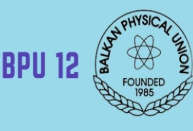https://doi.org/10.1140/epjd/s10053-021-00039-1
Regular Article - Topical Issue
Guiding of protons through radially deformed triple-wall carbon nanotubes
Department of Theoretical Physics and Condensed Matter Physics (020), Vinča Institute of Nuclear Sciences - National Institute of the Republic of Serbia, University of Belgrade, P.O. Box 522, 11001, Belgrade, Serbia
Received:
20
September
2020
Accepted:
24
December
2020
Published online:
8
February
2021
Subject of this study is a theoretical investigation of the channeling of high energy protons with the radially deformed triple-wall carbon nanotubes (TWNTs). Specifically, we chose a proton energy of 1 GeV and perfect and the radially deformed TWNTs (15, 0)@(10, 0)@(5, 0) of radial strengths  and 0.3. We presented the channeling potential within the perfect and deformed TWNTs and corresponding spatial and angular distributions of channeled protons. We treated the problem relativistically. We also analyzed the case where proton beams enter nanotube under different incidence angles. We analyzed two cases
and 0.3. We presented the channeling potential within the perfect and deformed TWNTs and corresponding spatial and angular distributions of channeled protons. We treated the problem relativistically. We also analyzed the case where proton beams enter nanotube under different incidence angles. We analyzed two cases  and 5
and 5  . We also varied the value of incidence angle of proton beam and calculated the efficiency of nanotube channeling. This is the first time that we presented spatial and angular distributions of channeled protons with radially deformed TWNTs with angular effect of proton beam, and also, for the first time we presented their channeling efficiency. Our results show that the spatial and angular distributions depend strongly on the nanotube lengths, incident angle of the proton beam, and on the level of radial deformation of nanotube. Multi-wall nanotubes (MWNTs) are better candidates for realization of ion guiding than single-wall nanotubes (SWNTs) because it is easier to produce them straight. Also, deformation of the nanotube and the incident proton beam under some initial angle with respect to the nanotube axes represent realistic situation. That is why we believe that these results may be useful for production and guiding of nanosized ion beams by nanotubes.
. We also varied the value of incidence angle of proton beam and calculated the efficiency of nanotube channeling. This is the first time that we presented spatial and angular distributions of channeled protons with radially deformed TWNTs with angular effect of proton beam, and also, for the first time we presented their channeling efficiency. Our results show that the spatial and angular distributions depend strongly on the nanotube lengths, incident angle of the proton beam, and on the level of radial deformation of nanotube. Multi-wall nanotubes (MWNTs) are better candidates for realization of ion guiding than single-wall nanotubes (SWNTs) because it is easier to produce them straight. Also, deformation of the nanotube and the incident proton beam under some initial angle with respect to the nanotube axes represent realistic situation. That is why we believe that these results may be useful for production and guiding of nanosized ion beams by nanotubes.
© The Author(s), under exclusive licence to EDP Sciences, SIF and Springer-Verlag GmbH Germany, part of Springer Nature 2021





